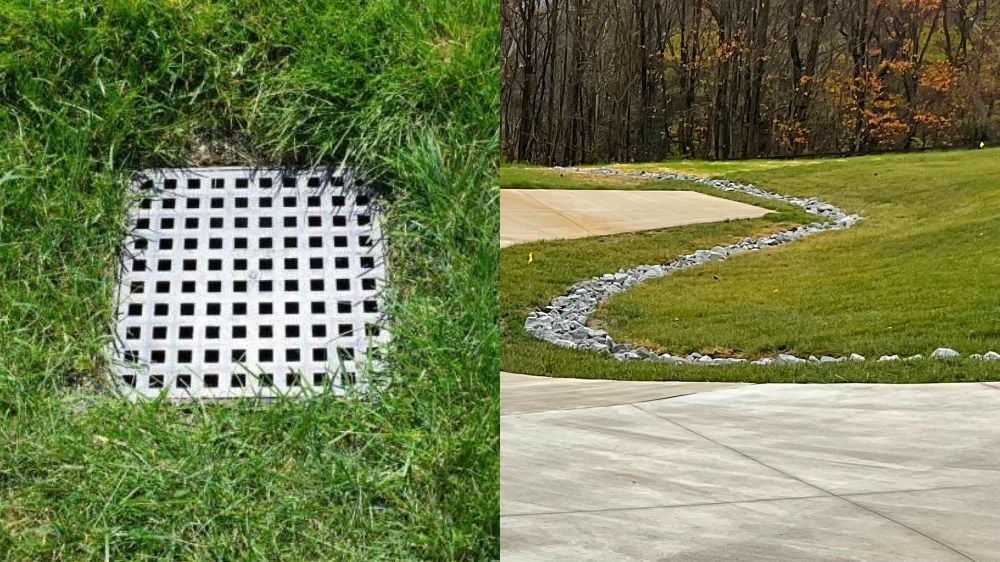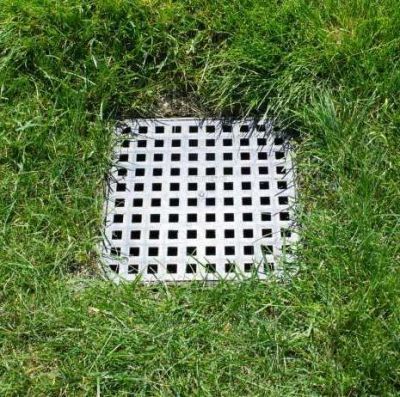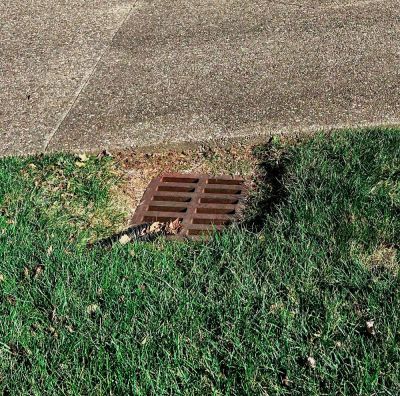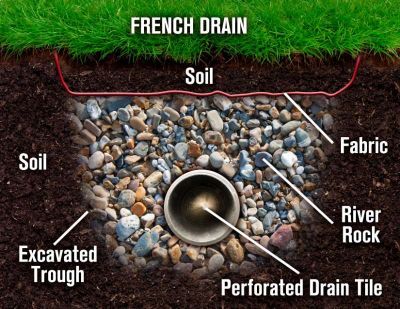What's the difference between catch basins and French drains?
November 16th, 2022 | 3 min. read
By Sarah Etler

Get to know two popular methods of keeping water drainage under control and figure out which may be the right one for your property.
Not only is excess water a major nuisance when it comes to keeping mosquitos at bay or your landscaping in good shape, but it can also impact your home’s foundation or the concrete around your property.
Keeping drainage and runoff under control is crucial for keeping your lawn, concrete, retaining walls, and home in great condition, and installing a catch basin, French drain, or both, on your property can help you achieve that goal.
This article will take a look at the differences between catch basins and French drains, and explain when to use one over the other.
What Is a Catch Basin?
A catch basin is essentially a large drain designed to remove standing water and runoff from lawns and other areas with pooling water.
Catch basins consist of a surface-level grate that connects to a drainage system underneath, which is usually a large box with drainage pipes leading to storm drains, downspouts, or local waterways.
Properly installed catch basins can move water away at a very fast rate, even during heavy storms, which can help alleviate standing water and flood risks.


What Is a French Drain?
A French drain is a long, specialized trench installed under the surface of a lawn, and it’s designed to move surface and groundwater away from home foundations and other important structures, like retaining walls.
French drain trenches contain a perforated pipe installed on a slope to bring water away from the problem area, and the pipe is surrounded by gravel and rock. The rock is normally covered by a sheet of landscaping fabric, which helps prevent weeds or other debris from clogging the pipe’s holes, then the landscaping or lawn is replaced on top.
Depending on the desired look, French drains don’t have to be covered. Instead of adding landscaping fabric and replacing the lawn above the trench, the rock can fill the entire trench and be left exposed.

When to Use a Catch Basin vs. French Drain
Catch Basin
Catch basins are ideal for removing large quantities of standing water from one area, and because of this, areas prone to flooding, pooling, or that seem to always be wet and muddy are ideal for catch basins.
Because they limit the amount of standing water in an area, catch basins help cut down on mosquitos, support healthy lawns and landscaping, and help reduce the risk of flooding buildings or basements.
French Drain
Because French drains can be completely covered by the lawn and landscaping above them, they are ideal for people who want a hidden solution. And, because they are sub-surface drainage systems, they are good for people who have excess groundwater that needs to be drained away.
Also, due to the sub-surface nature of French drains, they are especially effective at removing water near house foundations or retaining walls, potentially saving lots of time and money on future repairs.
Using Catch Basins and French Drains Together
Catch basins and French drains can be used in tandem depending on the drainage needs of the situation.
For example, a catch basin can be installed at the top of a French drain, collecting water from a particularly poorly drained area, then the water can pass through the French drain to the storm drain or local waterway. Groundwater and surface water from the lawn can still pass into the French drain while the catch basin collects the water from the especially wet area.
In this situation, the homeowner benefits from the draining properties of both the catch basin and the French drain at the same time.
Catch Basins, French Drains, and Your Concrete
If you have a lot of excess water around your property, it may be impacting the health of your concrete. Water flowing across and under slabs can erode the soil underneath them, causing them to settle.
Installing proper drainage systems, ensuring that downspouts aren’t pointed directly at the slabs, and making sure gutters aren’t overflowing near the concrete can help prevent it from settling due to water erosion.
It’s important to note, however, that French drains and catch basins put in place to catch runoff from concrete are more likely to function optimally when installed as part of the original concrete design. The way the concrete was finished, its slope, and other situational factors can all have an impact on the effectiveness of drainage systems installed after the original concrete.
Summary
Catch basins and French drains are two great ways to control the water flow around your property, which is crucial in protecting your landscaping, concrete, and retaining walls from excess water, and helping prevent potential water damage to your home’s foundation or basement.
No matter what drainage method you choose, making sure it’s installed correctly and with your home’s specific runoff and water movement patterns in mind is crucial. Hiring an experienced and dedicated team to take care of your individual drainage needs can make all the difference for your property.
During your free concrete leveling consultation, our sales representatives will always look for the causes of your sunken concrete and water issues. This will sometimes come with the recommendation to install French drains or catch basins to mitigate water issues.
Although many of our franchises don't install drainage systems, they will often have recommendations for companies that provide this service. Those A-1 franchises that do install French drains and catch basins will be happy to provide an estimate.
Want to know more? Check out these topics from our Concrete Academy:
Sarah Etler joined A-1 Concrete Leveling after receiving her Bachelor of Arts degree in English from Northern Kentucky University. As A-1's Content Marketing Manager, she works closely with industry experts to produce content that will best answer questions related to concrete repair and maintenance practices. Sarah loves living a life full of discovery and is excited every day to see what new things she can learn and share with those around her.
Topics: